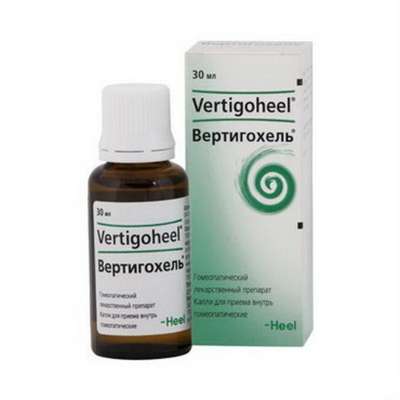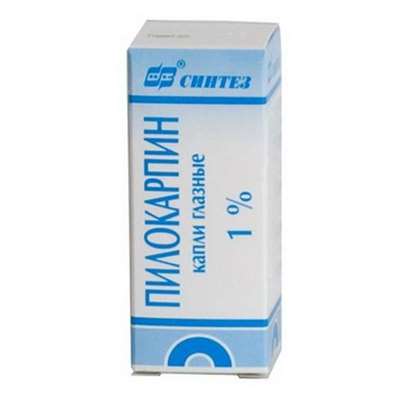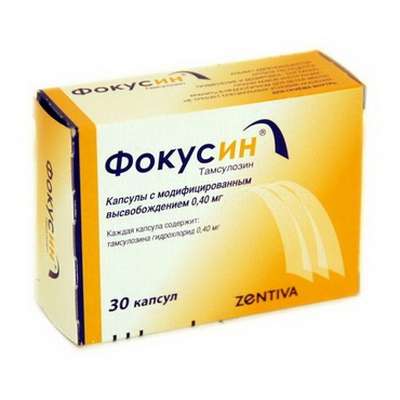Instruction for use: Flixonase
I want this, give me price
Active substance Fluticasone
ATX codeR01AD08 Fluticasone
Pharmacological group
Glucocorticosteroids
Nosological classification (ICD-10)
J30 Vasomotor and allergic rhinitis
Allergic rinopatiya, Allergic rhinosinusopathy, Allergic respiratory diseases, Allergic rhinitis, nasal allergy, Seasonal Allergic Rhinitis, Vasomotor rhinitis, Long-allergic rhinitis, Perennial allergic rhinitis, Perennial allergic rhinitis, Year-round or seasonal allergic rhinitis, Year-round allergic rhinitis nature, Rhinitis allergic vasomotor, Exacerbation of pollen allergy in the form of Syndrome rinokonyunktivalnogo, Acute allergic rhinitis, Edema of the nasal mucosa, Edema of the nasal mucosa, Swelling of the mucosa of the nasal cavity, Swelling of the nasal mucosa, Swelling of the nasal mucosa, pollen disease, Permanent allergic rhinitis, rhinoconjunctivitis, rhinosinusitis,rhinosinusopathy, Seasonal allergic rhinitis, Seasonal Allergic Rhinitis, Haymarket rhinitis, Chronic allergic rhinitis, Allergic respiratory diseases
Composition and form of release
Spray nasal dosed 1 dose
Fluticasone propionate (micronized) 50 μg
Auxiliary substances: dextrose (anhydrous); Cellulose and carboxymethylcellulose microcrystalline; Phenylethyl alcohol; Solution of benzalkonium chloride; Polysorbate 80; Hydrochloric acid is diluted; purified water
In bottles of yellow glass type I with a dispenser of 60 and 120 doses; In a carton box 1 bottle.
Description of dosage form
White, opaque suspension free from foreign particles.
Characteristic
GCS (glucocorticosteroids) for topical application.
pharmachologic effect
Pharmacological action - anti-inflammatory, anti-edematous, anti-allergic.
The anti-inflammatory effect is realized as a result of interaction of the drug with the GCS receptors. Suppresses the proliferation of mast cells, eosinophils, lymphocytes, macrophages, neutrophils. Fluticasone propionate reduces the production of inflammatory mediators and other biologically active substances (histamine, PG, leukotrienes, cytokines) during the early and late phases of an allergic reaction. Restores patient's reaction to bronchodilators, allowing to reduce the frequency of their use. Reduces sneezing, itching in the nose, runny nose, stuffy nose, discomfort in the sinuses and a feeling of pressure around the nose and eyes. In addition, it alleviates eye symptoms associated with allergic rhinitis.
Pharmacodynamics
It has a quick anti-inflammatory effect on the nasal mucosa, and its antiallergic effect is manifested as early as 2-4 hours after the first application.
Reduction of the severity of symptoms (especially nasal congestion) persists for 24 hours after a single injection of a spray at a dose of 200 μg.
Fluticasone propionate improves the quality of life of patients, including physical and social activity.
When used in recommended doses, it does not have any significant systemic activity and practically does not inhibit the hypothalamic-pituitary-adrenal system.
Pharmacokinetics
After intranasal administration of fluticasone propionate (200 μg / day), C max in plasma is not detected in most patients (ie, it is less than 0.01 ng / ml). The highest Cmax is 0.017 ng / ml. Direct absorption on the mucosa of the nasal cavity is negligible due to the low solubility of the drug in the water, as a result of which most of the dose is eventually swallowed. From the gastrointestinal tract, less than 1% of the dose is absorbed into the blood due to weak absorption and presystemic metabolism. All this leads to the fact that the total absorption in the nasal cavity and digestive tract (swallowed drug) is extremely low.
When the equilibrium concentration in the plasma is reached, fluticasone propionate has a large volume of distribution (about 318 L). It has a rather high ability to bind to plasma proteins (91%).
Fluticasone propionate is rapidly eliminated from the plasma, mainly as a result of metabolism in the liver to an inactive carboxyl metabolite under the action of the CYP3A4 isoenzyme of the cytochrome P450 system. The swallowed fluticasone propionate undergoes intensive metabolism as a result of the primary passage through the liver.
The main way of elimination is the removal of fluticasone propionate and its metabolites with bile.
Indications
Seasonal and all-the-year-round allergic rhinitis (prevention and treatment).
Contraindications
Hypersensitivity to fluticasone propionate or any other ingredient in the drug, age to 4 years.
pregnancy and lactation
Pregnant women should refrain from using nasal spray Fliksonase, unless the doctor deems the use of this drug necessary.
Side effects
Dry and irritated nose and throat, a sense of unpleasant odor and taste, headache and nosebleeds.
Hypersensitivity reactions, including a skin rash, swelling of the face and tongue, are rare (less than 1/10000) - anaphylactic reactions and bronchospasm.
Local reactions: burning, nasal congestion; Very rarely (less than 1/10000) - perforation of the nasal septum, especially with surgical interventions in the nasal cavity in the anamnesis.
Intranasal administration of 2 mg of fluticasone propionate 2 times a day for 7 days had no effect on the function of the hypothalamic-pituitary-adrenal system (a dose 20 times higher than the therapeutic dose).
Interaction
Due to very low concentrations of fluticasone propionate in plasma after application of the nasal spray Fliksonase, clinically significant interactions are unlikely.
Ritonavir (a potent inhibitor of the coenzyme CYP3A4 of the cytochrome P450 enzyme system) can significantly increase plasma concentrations of fluticasone propionate, resulting in a dramatic reduction in serum cortisol levels, systemic corticosteroid side effects, including Cushing's syndrome and suppression of adrenal function.
Inhibitors of the isoenzyme CYP3A4 of the cytochrome P450 enzyme system cause negligible (erythromycin) or insignificant (ketoconazole) increase in plasma concentrations of fluticasone propionate, which do not cause any significant increase in serum cortisol concentrations.
Dosing and Administration
Intranasally. Adults and children over 12 years for the prevention and treatment of allergic rhinitis recommended dose - 2 injections in each nasal passage 1 time per day, preferably in the morning (total dose of 200 mcg / day). After reaching the control of symptoms, the dose can be reduced to 1 injection into each nostril once a day (100 μg / day).
In some cases, 2 injections per each nasal passage 2 times a day (total dose 400 μg / day) for a short time to achieve control over the symptoms, after which the dose can be reduced.
The maximum daily dose (total dose of 400 mcg / day) - no more than 4 injections in each nasal passage.
Elderly patients: a usual dose for adults.
Children aged 4-12 years for the prevention and treatment of seasonal allergic rhinitis - 1 injection (50 mcg) in each nasal passage 1 time per day. The maximum daily dose (total dose of 200 mcg / day) - no more than 2 injections in each nasal passage.
To achieve a complete therapeutic effect, regular use of the drug is important. The drug may not give immediate therapeutic effect, the maximum relief comes after 3-4 days of treatment.
Use of an inhaler
Before use, you should gently shake the bottle, take it by placing the index and middle fingers on either side of the tip, and the thumb under the bottom.
At the first use of the drug or a break in its use for more than 1 week, it is necessary to check the serviceability of the nebulizer: to direct the tip away from itself, to make several pressures until a small cloud appears from the tip. Next, you need to clean your nose (blow your nose slightly). Close one nasal passage and insert the tip into the other nasal passage. Tilt your head slightly forward, continuing to hold the bottle vertically. Then you should start breathing in through your nose and, continuing to inhale, press once with your fingers to spray the drug. Exhale through the mouth. Repeat the procedure for the second spray in the same nasal passage, if necessary. Then repeat the above procedure completely by inserting the tip into the other nasal passage.
After use, the tip should be soaked with a clean cloth or a handkerchief and cover it with a cap.
The atomizer should be washed at least once a week. To do this, carefully remove the tip and wash it in warm water. Shake off excess water and leave to dry in a warm place. Avoid overheating. Then gently place the tip on the same place in the top of the brown bottle. Wear a protective cap.
If the tip of the tip is clogged, the tip should be removed as described above and left for a while in warm water. Then wash under a stream of cold water, dry and again put on the bottle. Do not clean the tip of the tip with a pin or other sharp objects.
Overdose
No data.
Precautionary measures
Caution should be exercised when using the drug concomitantly with such potent inhibitors of the CYP3A4 isoenzyme as ritonavir and ketoconazole, since these drugs can cause an increase in plasma concentrations of fluticasone propionate; With the simultaneous use of such medicinal forms of corticosteroids as tablets, creams, ointments, agents for the treatment of bronchial asthma, analogous nasal or ophthalmic sprays and nasal drops; In the presence of fever (herpes), as well as infections of the nasal passages or paranasal sinuses (while infectious diseases of the nose require appropriate treatment, but are not a contraindication to the use of nasal spray fluticasone propionate); After a recent injury to the nose or surgery in the nasal cavity, or in the presence of ulcers of the nasal mucosa.
special instructions
The drug is indicated only for intranasal administration.
If after 7 days of continuous use of the drug does not improve, then you should see a doctor.
Without the supervision of a doctor, nasal spray Fliksonase should not be used continuously for more than 6 months.
With prolonged use, regular monitoring of the function of the adrenal cortex is necessary.
The effect of nasal spray fluticasone propionate can manifest itself only after several days of treatment.
Caution should be exercised when transferring patients from systemic steroid therapy to nasal spray administration of fluticasone propionate if there is reason to suspect adrenal insufficiency.
In most patients, the nasal spray of fluticasone propionate eliminates the symptoms of seasonal allergic rhinitis, but in some cases, with very high concentrations of summer allergens in the air, additional therapy may be needed.
To stop ophthalmic manifestations against the background of successful therapy of seasonal allergic rhinitis, additional therapy may be required.
storage Conditions
At a temperature not exceeding 30 ° C.
Keep out of the reach of children.
Shelf life
2 years.
Do not use after the expiry date printed on the package.

 Cart
Cart





